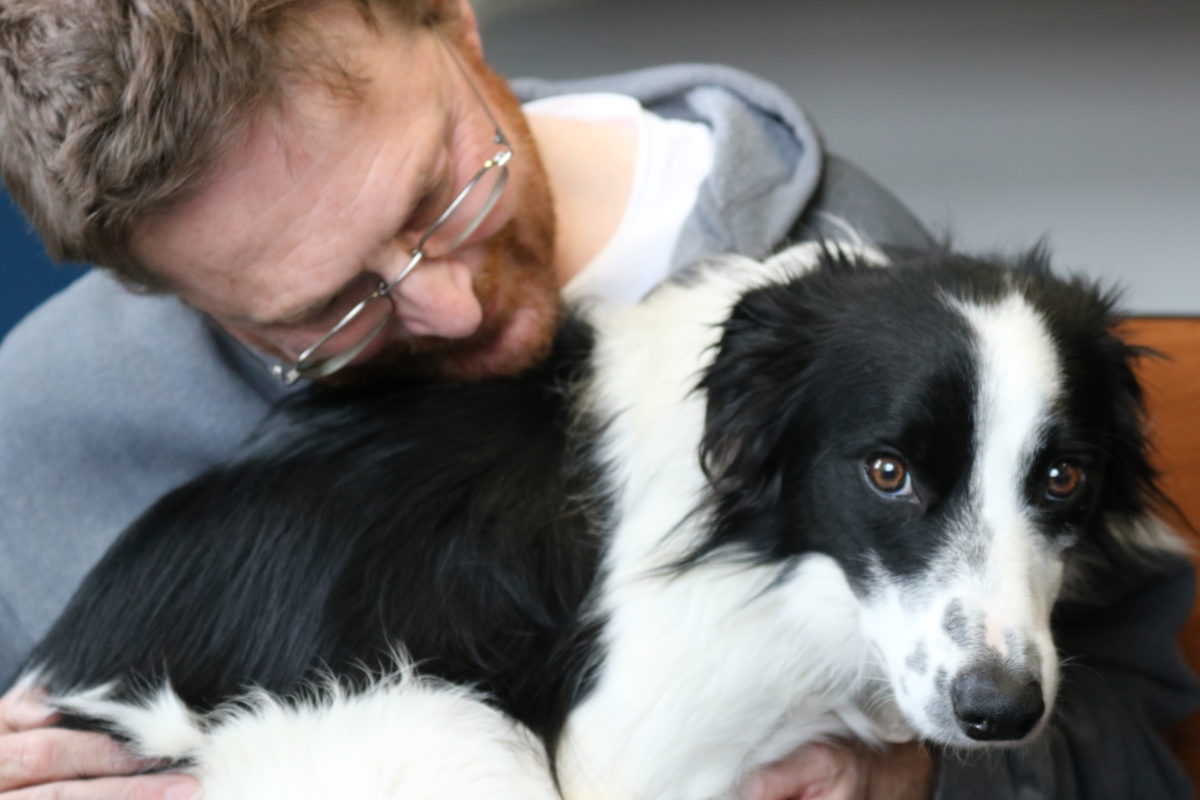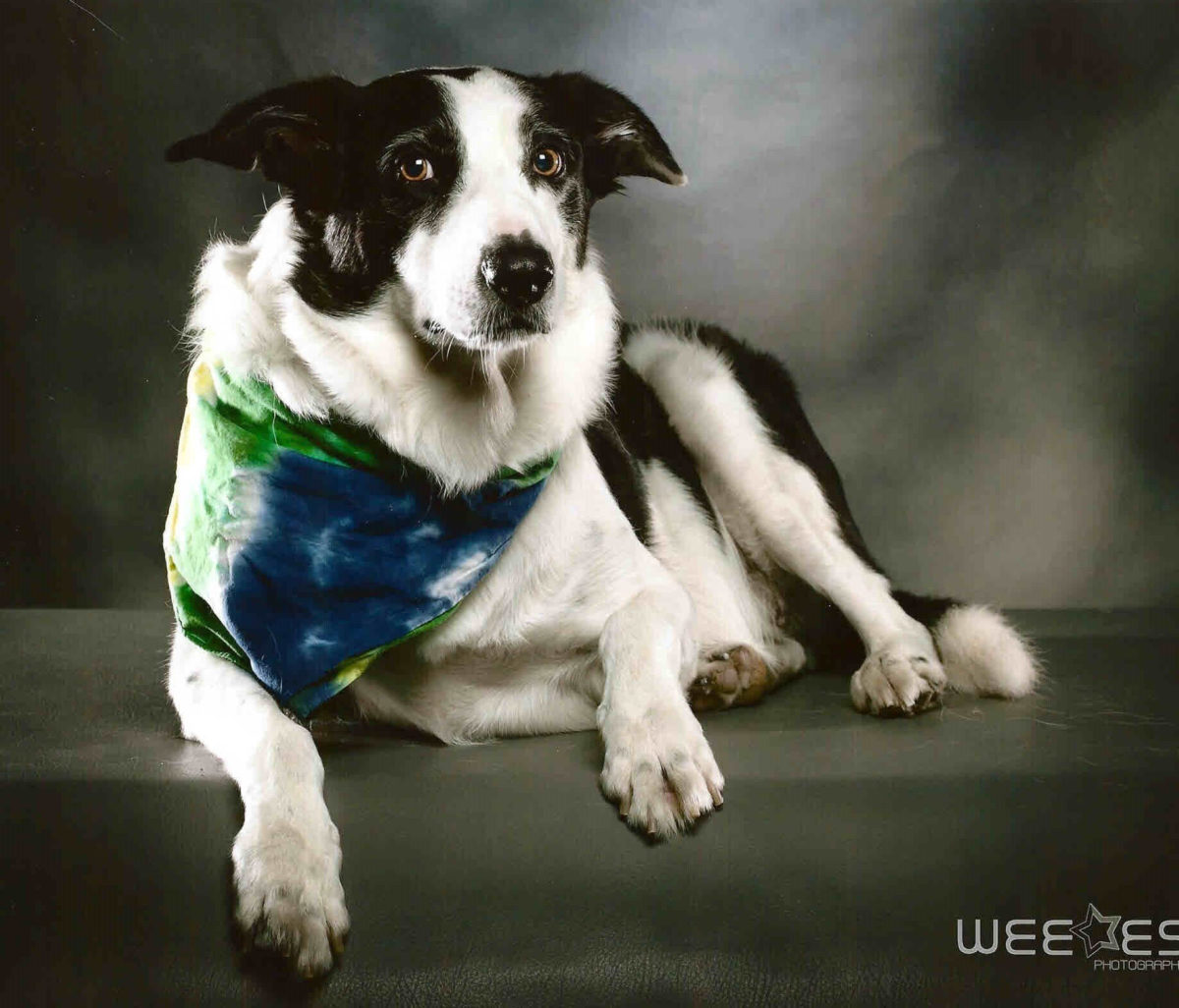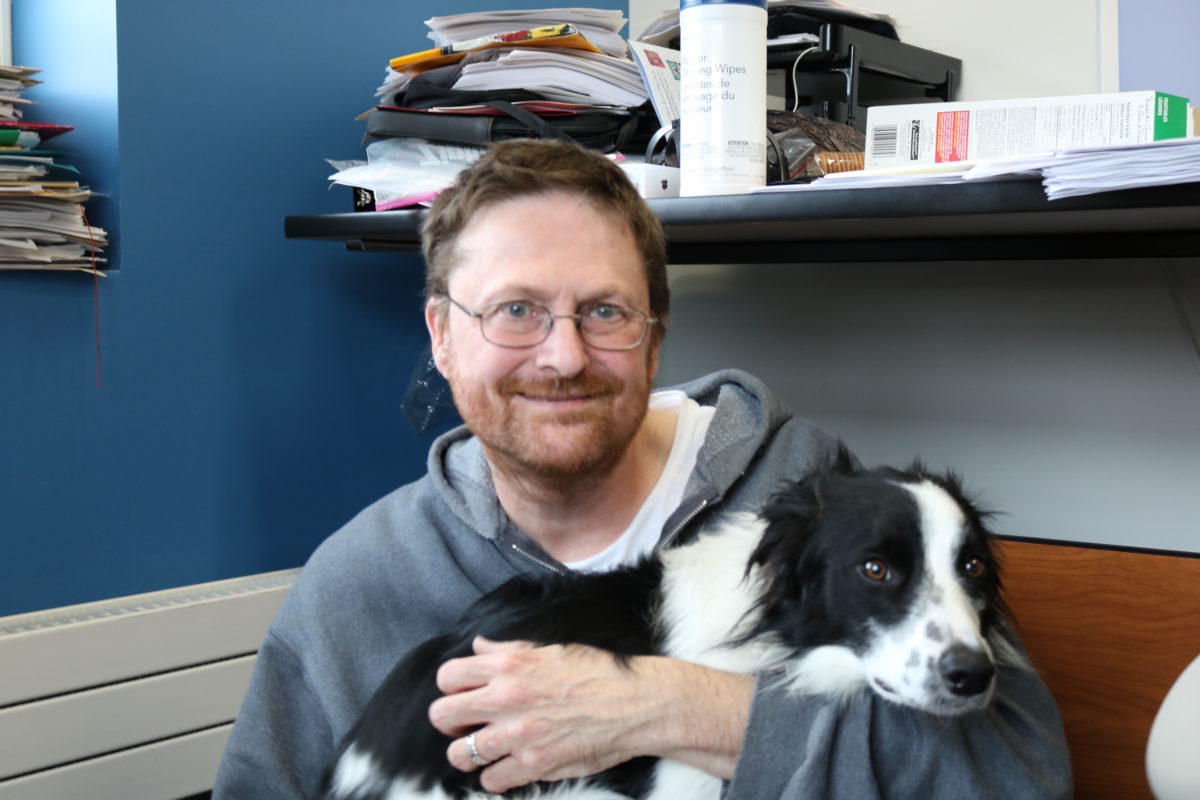
Clive Baldwin hasn’t always been a dog person. But 11 years ago, he adopted a six-month-old border collie named Jagger from a local shelter for his wife’s birthday. And then he fell in love.
“It was probably the first day [Jagger] came home. I took him for a walk around the block and he pissed on somebody’s BMW, and I just thought, ‘He’ll stay,’” Baldwin said with a laugh.
Baldwin is an associate professor in the School of Social Work at St. Thomas University and also the Canada Research Chair in Narrative Studies.
He often brings Jagger, or his one-year-old border collie named Molly, to work. Now, Baldwin has found a way to make Jagger and Molly a part of his research.
The research chair has started a new project to explore how humans and dogs interact in the workplace.
The 18-month study will involve approximately six participants and their dogs. It will explore how their relationship benefits the workplace and their overall lives.
“There’s a sense of, the world is more right when that [canine-human] bond is there. That it can be realized between us. And it’s that notion of companion species’: I am human in the way I am human because I have Jagger in my life. He’s a dog in the way he’s a dog because he has [me] in his life,” Baldwin said.

“At the same time, we all have to work … and that often takes people [away from their pet] for a long time. For a dog, me being seven hours away, [he] doesn’t know I’m coming back … it’s a long time.”
Baldwin believes it’s more than just missing each other when a human is away from their animal.
“There’s work to show about pet attachment, but it isn’t simply attachment,” Baldwin said.
“It isn’t the sense of I miss him when he’s not here, I do, don’t get me wrong, but it isn’t simply that I miss him. There is a qualitative difference, I believe, in how I am in the world when he’s around and I think for him there’s a qualitative difference when I’m around. I think he misses me.”
Although Baldwin loves his job, he understands sometimes work can be “soul-sucking.” He thinks having a dog in the workplace can make the work day less stressful.
“In a world in which companion species’, dogs and humans, one of those has to earn a living . . . and [that] takes them away from that bond, is there a way in that economic structure to promote that bond and what are the benefits of that?” Baldwin asked.
Baldwin often brings Jagger and Molly to work with him because he has space in his office for them to roam and they don’t typically bother anyone.
“The hypothesis is that, if Jagger and Molly can come with me to work, and that bond is being promoted at work, rather that sort of … being tolerated, why can’t we create an environment in which they are welcome?” Baldwin asked.
“We’re companion species’ so why aren’t they involved in all the things we do? And that has benefits.”
Baldwin said there are more benefits to having a dog in the workplace than decreasing stress.
“It isn’t simply about feeling good, it’s not about, ‘Oh, my blood pressure goes down,’ that may well happen,” he said.

“It’s a sense that the world is a good place, the world is right, that it’s filled with this sort of love, attachment. So why not try and find ways in which to make the most of that?”
Having Jagger or Molly at work reminds Baldwin of his human needs. He said that when the dogs need to eat, it reminds him that he should eat lunch. When he takes the dogs outside, he gets fresh air and stretches his legs. And having a dog around tends to start new conversations.
“I talk to people more. I make connections with other people more. I talk to strangers. I take Molly out for a wee and suddenly I’m talking to students I’ve never talked to,” Baldwin said.
“We would ignore each other normally. But [dogs] generate those sort of mini-connections, and they’re a good thing.”
Baldwin said his goal is to collect empirical data that could lead to policy making in the future.
“It would be nice to have some empirical type data on [companion species’]. It’s just an interesting question, how do we conceptualize companion species’ and how do we operationalize this notion in our work?” he asked.
“It raises our knowledge about human-dog interactions, which may contribute to changes in the workplace.”
In a perfect world, Baldwin imagines a campus with water dishes outside every building and an enclosed park for dogs to run off-leash.
“No one yet has said, you can’t bring your dogs in. But that’s a far cry from having an environment that sees dogs as companions as integral to the workspace,” he said.
“We shouldn’t have to see them as, to be in the workspace, they have to have a health benefit. Why can’t we welcome them as companions?”
Baldwin said the study won’t change the world, but it may make it a little bit better.
“So my question is, does it have to have a health benefit? There are existential benefits,” he said. “The world is a nicer place because dogs are in it, so let’s have a space that dogs can be in.”
